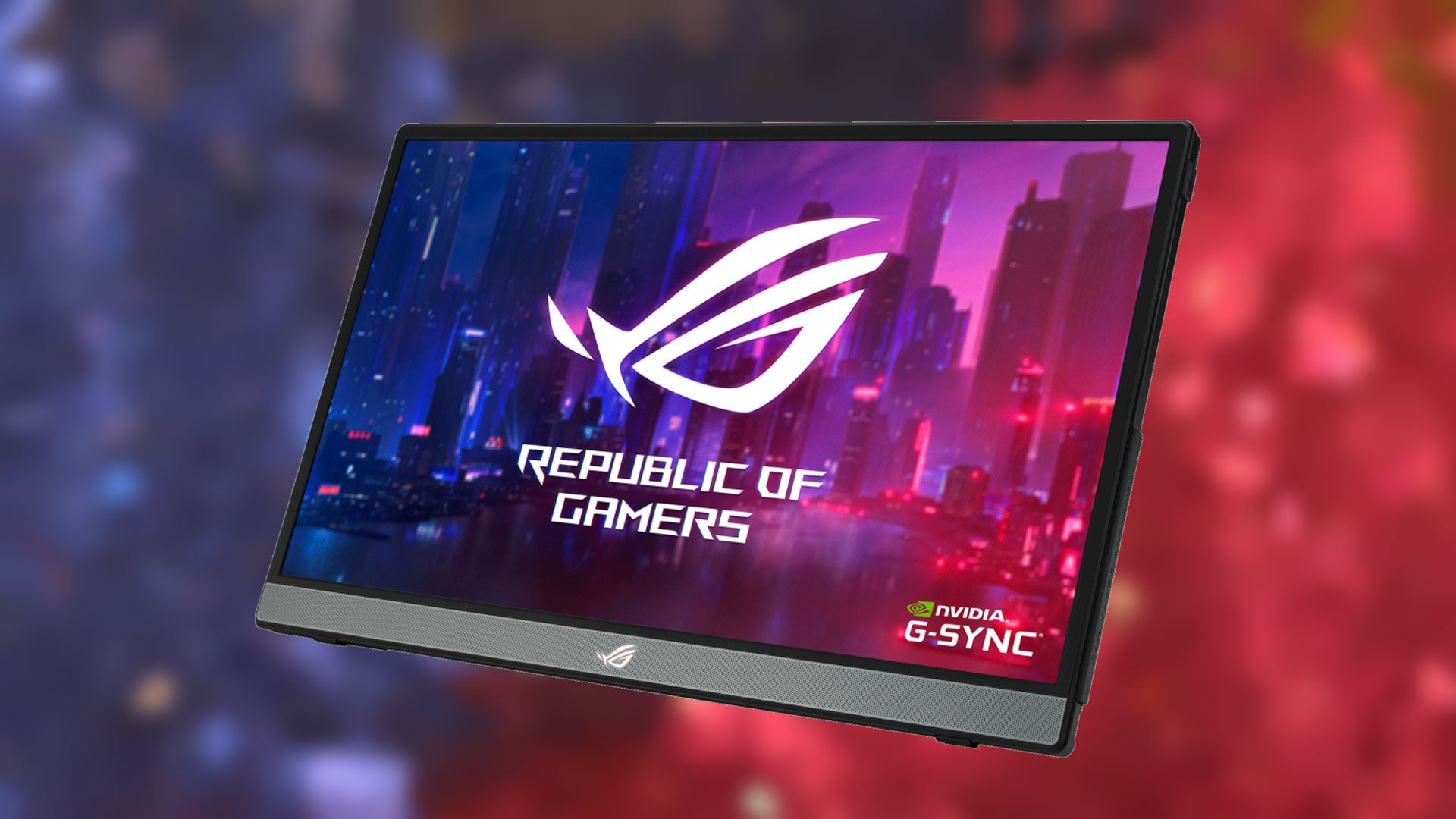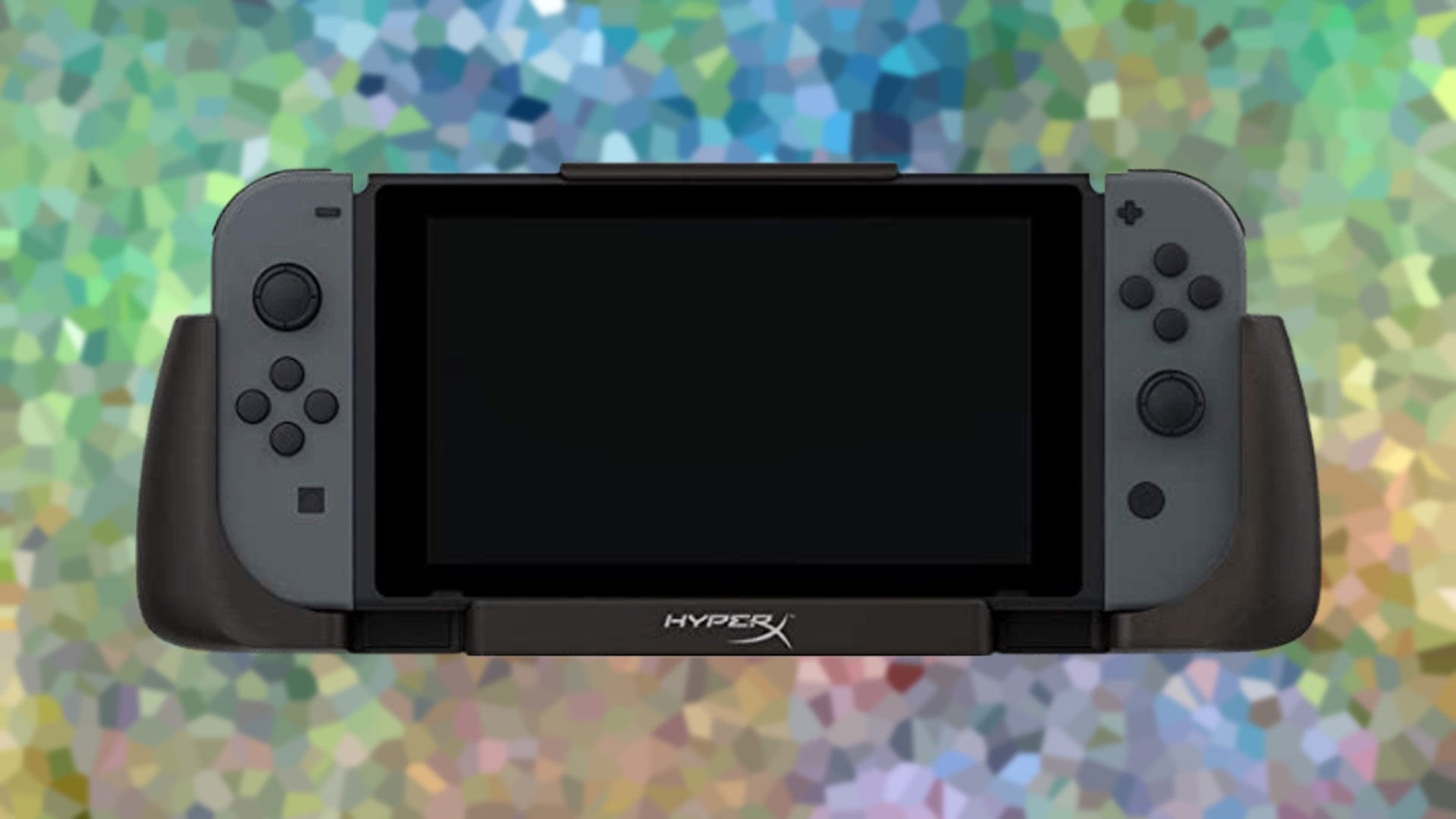Almost anyone can benefit from extra screen real estate, so you may be considering grabbing a portable monitor. Whether you want something that’ll increase the screen size of the best handheld gaming PCs, like the Asus ROG Strix XG17AHPE, or you’re after something simple to help increase productivity, like the Dell C1422H, we’ve found 12 portable monitors ready to deliver.
TL;DR – These Are the Best Portable Monitors
- Asus ROG Strix XG17AHPE - Best for gaming
- Dell C1422H - Best budget pick
- Asus ZenScreen MB14AC - Best 14-inch
- Desklab 4K Touchscreen - Best 4K
- LG Gram +View - Best 1440p
- Asus ProArt Display PA148CTV - Best for creatives
- ViewSonic ColorPro VP16-OLED - Best OLED
- Wacom Cintiq Pro 16 - Best for artists
Portable monitors might not offer the large screen size of typical gaming monitors, but it’s hard to beat their convenience when you want to work or play on the go, thanks to their compact build, simple connectivity, and inclusion of a stand. The best laptops have limited storage space and the best smartphones aren’t always conducive to getting work done, and adding an extra display can make a world of difference. So, to help narrow the search, we’ve selected the best portable monitors, ranging in price, size, and features — and look here to see them in the UK.
Looking for discounts? Check out our guide to the best gaming monitor deals right now.
Additional contributions by Danielle Abraham and Michelle Rae Uy.
1. Asus ROG Strix XG17AHPE
Best Portable Gaming Monitor
Pros:
- 1080p/240Hz refresh rate
- Quick charging battery
Cons:
- Built-in speakers could sound better
It’s hard to believe that any portable monitor can come packing all the features you need for a quality gaming setup from anywhere, but the Asus ROG Strix XG16AHPE may be just that. Like some of our favorite gaming monitors, this portable option boasts a 240Hz refresh rate with Nvidia G-Sync compatibility and low input lag, so you’re in for smooth, tear-free gameplay. You also get a plenty bright 17.3-inch 1080p display featuring an IPS panel for easy viewing from any angle.
The Asus ROG Strix XG16AHPE has tons of portability behind its solid display. You can truly use it from anywhere thanks to a quick-charging battery, which should last about three hours, and built-in speakers to boot. Plus, the thin kickstand supports the monitor either portrait or landscape orientations. When you’re all done, it easily stows away in the included case. Lastly, it’s a bit more versatile than other options thanks to its micro-HDMI and a USB-C ports.
2. Dell C1422H
Best Budget Portable Monitor
Pros:
- Crisp, vibrant visuals
- Built-in tilt stand
Cons:
- No built-in battery
Portable monitors come in a wide array of price options, and the Dell C1422H is a perfect mid-range choice. With this monitor, you’ll be getting a totable 14-inch 1080p display that offers crisp, vibrant visuals. Plus, it offers a perfect view almost anywhere with its IPS panel that features a 300-nit peak brightness and anti-glare finish. The built-in tilt stand that goes from 10 degrees to 90 degrees, so you can pitch the monitor for comfortable viewing.
The Dell C1422H works great for mobile use or as an additional screen for your permanent workstation. It’s super simple to get started using this monitor, as a USB-C cable connected to your computer will transmit both power and image to the screen. Unfortunately, there is no built-in battery, but that allows it to be extremely lightweight and compact, making it easier to take with you anywhere. There’s a 60Hz refresh rate which is fine for getting work done, but it’s not the best for heavy gaming, especially with no G-Sync or FreeSync support.
3. Asus ZenScreen MB14AC
Best 14-inch Portable Monitor
Pros:
- Compact, lightweight build
- Full HD display with anti-glare IPS technology
Cons:
- Poor contrast ratio
Sometimes you don't want a large 15.6-inch monitor, and you’re happy to have a slightly smaller option. That’s where the Asus ZenScreen MB14AC steps in. Clocking in at 14 inches and weighing just over a pound, this compact monitor is easy to tote around anywhere. It’s rocking a Full HD display with anti-glare IPS technology to make for easy viewing from a 178-degree wide-area perspective. Unfortunately, it doesn’t have the best contrast ratio, and the color gamut is narrow, but it’s still handy for reviewing documents.
Connecting the display to your devices is simple using an included USB-C cable, and it comes with a USB-A adapter if needed. You also won’t need to worry about buying a case, as the ASUS ZenScreen MB14AC is accessorized with a folio cover that doubles as a stand, letting you place the monitor in either landscape or portrait mode. There’s even a tripod mount on the back to get a better view of the screen.
4. Desklab 4K Touchscreen
Best 4K Portable Monitor
Pros:
- Sharp 4K resolution
- Bright and vibrant
Cons:
- Doesn’t remember settings
UHD portable monitors are few and far between, but we were able to find one that works great and doesn't cost a huge chunk of change. The Desklab 4K Touchscreen offers a 15.6-inch display with 400-nit brightness and a True LED backlight. This makes it brighter and a bit more vibrant than most external displays. And, thanks to its 4K resolution and thin bezels, there is loads of screen space for all of your multitasking needs. And as an added bonus, this display comes with a responsive touchscreen.
The Desklab 4K Touchscreen is not lacking in connectivity either thanks to its two USB-C ports, micro USB port, HDMI port, and 3.5mm aux. You should be able to get most of your devices connected to this monitor. There are even speakers loaded in. Unfortunately, this monitor lacks a solid integrated kickstand and the device doesn’t remember its previously used settings.
5. LG Gram +View
Best 1440p Portable Monitor
Pros:
- Ultra-crisp visuals
- Top-notch color performance
Cons:
- Only USB-C connectivity
The LG Gram +View technically isn’t a 1440p monitor, but it finds the sweet spot of resolutions between Full HD and 4K for ultra-crisp visuals. Rather than the typical 16:9 aspect ratio, you get 16:10 for just an extra bit of vertical screen real estate. The IPS display gets plenty bright, hitting 350 nits, while the superior contrast and top-notch color performance make it ideal for editing photos and videos or graphic design. The screen even auto-rotates between landscape and portrait mode just like your smartphone.
If you’re looking to take the LG Gram +View on the go, this 15.6-inch monitor keeps svelte dimensions, and the folio cover doubles as a stand to make life even easier. Connecting it to your device is simple thanks to two USB-C ports. Another option for connectivity would’ve been a welcome inclusion, but most will get by just fine with the USB-C.
6. Asus ProArt Display PA148CTV
Best Portable Monitor for Creatives
Pros:
- Excellent color accuracy
- Ten-point touchscreen capability
Cons:
- Chassis could be more durable
If you’re a photographer, graphic designer, videographer or any creative, you can benefit from using a portable monitor. The only problem is many lack the color and vibrancy required to make accurate edits, and that’s where the Asus ProArt Display PA148CTV comes in handy. The 14-inch display totes 100% sRGB and 100% Rec. 709 color gamut with Calman verified color accuracy, so your finished work should look as vibrant as intended.
On top of the color accuracy, the Asus ProArt Display comes loaded with other features that make it easier to get creative. The integrated dial on the rear makes display setting adjustments easy, and it even works seamlessly with Adobe programs to help fine-tune edits on your work. You can also use the ten-point touch screen capability to to bring your fingers into your creative workflow. And, most important, it is highly portable thanks to its compact design, integrated kickstand, and protective sleeve.
7. ViewSonic ColorPro VP16-OLED
Best Portable OLED Monitor
Pros:
- Impressive contrast
- Excellent color performance
Cons:
- No HDR support
The best OLED monitors are known for their high contrast and brightness, and the ViewSonic ColorPro VP16-OLED packs that technology into a lightweight, ultra-thin full HD monitor. You’ll get a 100,000:1 contrast ratio delivering deep blacks and up to 400 nits of brightness, ensuring easy viewing from just about any angle. And this 15.6-inch display especially excels in color performance, as it covers 100% of the DCI-P3 color gamut and is even Pantone-validated for some insanely accurate colors, making it ideal for creatives.
Adding to the convenience of the ViewSonic ColorPro VP16-OLED is a built-in, height-adjustable stand to get the monitor in an ideal position no matter where you are. It even comes with a detachable hood to block ambient light for easier viewing. You’ll also be good to connect this device to your laptop, PC, or Mac, as it offers a micro HDMI port and dual USB-C ports, with the USB-C ports delivering power too.
8. Wacom Cintiq Pro 16
Best Portable Monitor for Artists
Pros:
- 4K resolution
- Etched glass screen
- Wide color gamut
Cons:
- Competing options are more affordable
If you're a digital artist ready to take your craft to the next level without spending thousands of dollars on a monitor, the choice is obvious: the Wacom Cintiq Pro 16. This monitor may be a few years old now, but it's performance is still top-of-the-line, and that time in the field has allowed it to become a proven mainstay of the digital art community.
The appeal of the Cintiq lies in its display and pen experience. It uses a bright, 4K resolution screen with wide color gamut support (up to 98% of Adobe RGB), and an etched screen. This particular feature gives a sense of tactility to using the pen similar to draw with pencil and paper. The pen itself features 8,192 levels of pressure sensitivity and is fully customizable with integrated buttons and an erased on the opposite end.
The Cintiq Pro is also capable of enhancing your workflow. There are eight programmable Express Keys that can be mapped to different commands in Wacom's software. The display also supports multi-touch and gesture support for easy navigation and control of your PC.
The only downside is its price. Since its release in 2021, competition has explored. To this day, it's still hard to find anything that competes with its quality, reliability, and feature set, however, making this a fantastic pick for any artist.
Where to get the best portable monitor in the UK
How to Choose the Best Portable Monitor
Though they might not have all the features of a full-fledged desktop monitor, portable monitors still have plenty of benefits. Sometimes, the cheapest or simplest setup option might work, but other factors might better meet your specific needs.
First off, size does matter. Our picks range from 12.5-inches up to 17.3-inches. You might benefit from a larger screen if you’re using this as your main display for completing work or maybe doing a bit of gaming. The most common size seems to be 15.6-inches, which is a happy medium between size and portability which should work for most. However, if you’re hoping to use this screen in smaller spaces like on a plane, a 12.5-inch or 14-inch screen might be a better fit. Also, you may want to take weight into account as that’ll impact your ability to travel.
Next up, it’s important to pay attention to the screen itself. Most of the monitors on our list offer the standard 1080p resolution with an IPS panel. But, if you’re looking for it to be a bit more future-proof or want a better picture quality, then maybe invest in a 4K monitor. Some offer touchscreen capabilities as an added feature, but not everyone needs this and it often ups the price a bit.
The most important feature of all may be connectivity. It’s important to make sure that the monitor you purchase will work with the devices you bought it for. All of our picks offer the relatively universal USB-C connection, which is both speedy and provides power. If you’re looking to use it with a gaming console, some monitors also offer HDMI or microHDMI ports for more connection opportunities. It’s important to note that more powerful monitors may require a 10W USB-C.
Overall, those are some of the most important features on a portable monitor to make note of. However, diving deeper into contrast, brightness, refresh rate, and response time may also be to your benefit.
Portable Monitor FAQ
Who are portable monitors for?
Almost anyone can benefit from a portable monitor. Travelers and remote workers who are accustomed to using just a laptop or tablet will appreciate the uptick in productivity thanks to the light, compact extra screen that’ll easily slide into a bag. These monitors are also handy for giving presentations, while those with less desk space who want more screen real estate can grab a portable option over a typical desktop monitor. Even gaming phone or handheld gaming PC users might want a bigger screen with a speedy refresh rate to take on the go, making it easier to spot enemies.
What size portable monitor should I buy?
As a rule, portable monitors tend to be smaller than full-size displays for your PC. They're made to pop in a bag or easily carry under your arm from place to place. Because of this, the size that works best for you will depend on what you're going to be using it for and how portable you would like it to be. If you're just looking to display a second window, then a smaller screen will likely suffice. If you need a monitor for digital art, more screen real estate will be helpful when examining or drafting fine details.
How much do portable monitors cost?
Portable monitors vary widely in price, though many can be had for under $200. Keep in mind that low cost portable monitors may lack brightness and offer simpler features, like basic brightness and contrast adjustments. Higher performance portable monitors cost expectedly more, but generally you should expect to pay $100-300.
Christopher Coke has been a regular contributor to IGN since 2019 and has been covering games and technology since 2013. He has covered tech ranging from gaming controllers to graphics cards, gaming chairs and gaming monitors, headphones, IEMs, and more for sites such as MMORPG.com, Tom’s Hardware, Popular Science, USA Today’s Reviewed, and Popular Mechanics. Find Chris on Twitter @gamebynight.










